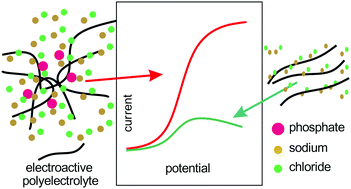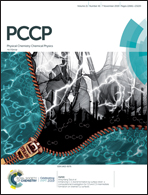The effect of ionic strength and phosphate ions on the construction of redox polyelectrolyte–enzyme self-assemblies
Abstract
Layer by layer assembly of polyelectrolytes with proteins is a convenient tool for the development of functional biomaterials. Most of the studies presented in the literature are based on the electrostatic interaction between components of opposite charges, limiting the assembly possibilities. However, this process can be tuned by modifying the environment where the main constituents are dissolved. In this work, the electron transfer behavior between an electroactive polyelectrolyte (polyallylamine derivatized with an osmium complex) and a redox enzyme (glucose oxidase) is studied by assembling them in the presence of phosphate ions at different ionic strengths. Our results show that the environment from which the assembly is constructed has a significant effect on the electrochemical response. Notably, the polyelectrolyte dissolved in the presence of phosphate at high ionic strength presents a globular structure which is preserved after adsorption with substantial effects on the buildup of the multilayer system, improving the electron transfer process through the film.



 Please wait while we load your content...
Please wait while we load your content...